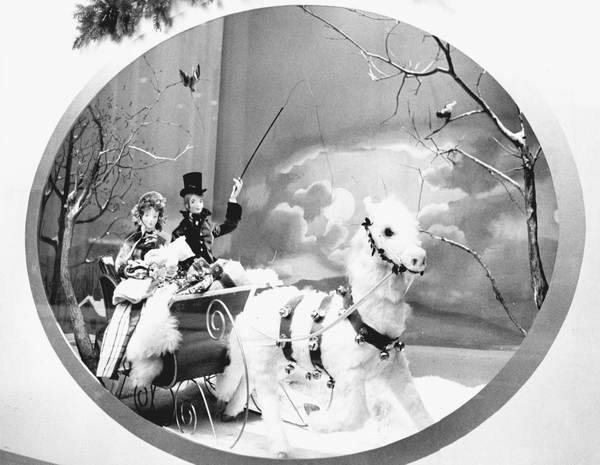During the 20th century, holidays at a department store meant one thing: winter window displays. Across the country, department stores would develop unique and intricately decorated windows for customers to view from the street – some even featured animation. With the holidays now in full swing, we’re featuring some of our favorite vintage photos of holiday windows in the US.
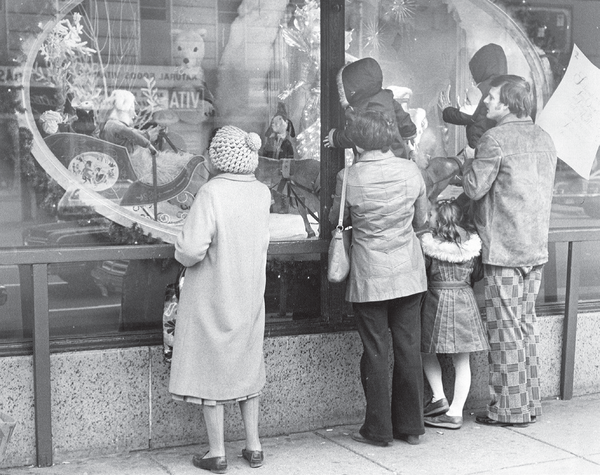
From the early 1900s through the 2000s, viewing a store’s holiday window was considered a treat for the family, and many would plan outings to view what magical ideas a store had come up with each year. In this photo, a family looks at the Christmas window as Woodward & Lothrop’s on December 26, 1978.
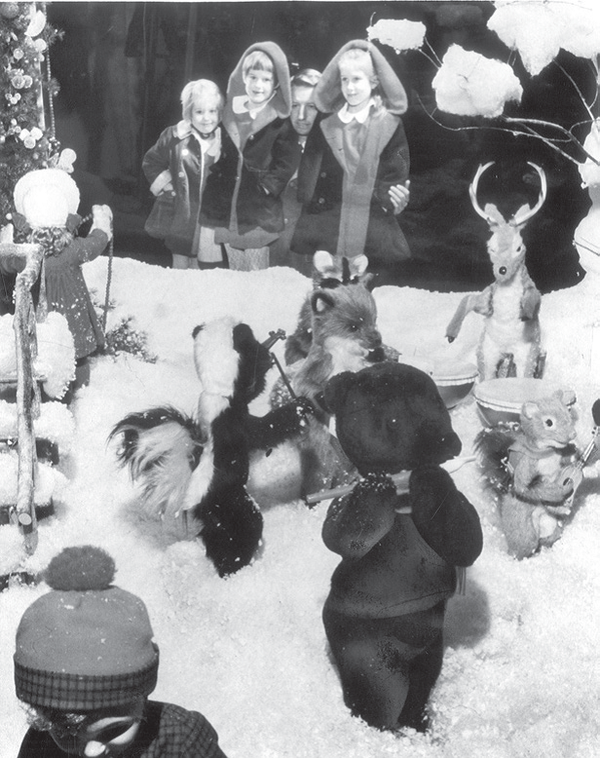
Besides showcasing the artistry and creativity of department store employees, store windows were also often feats of engineering. This 1968 photo shows a father and his children looking at the mechanical animals dancing at a Miller & Rhodes Christmas window display.
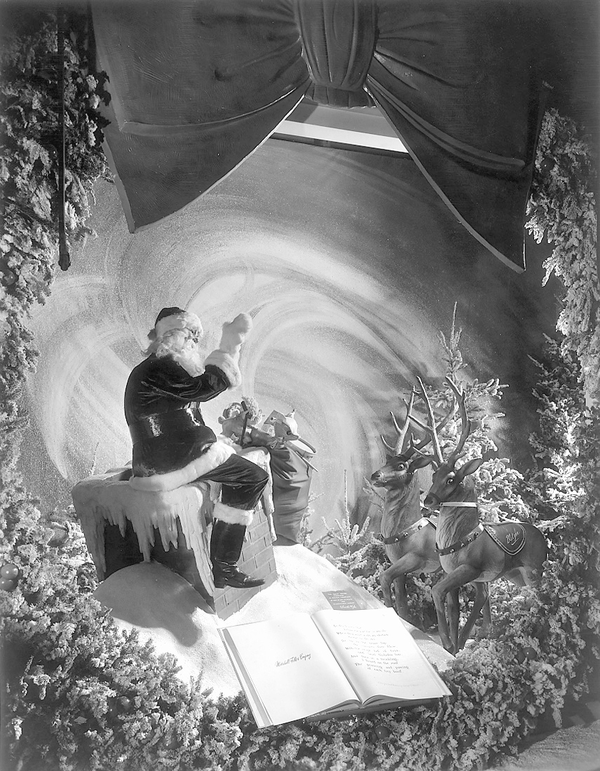
Many holiday window displays would center around various storylines, drawn from classic holiday tales. For the Marshall Field’s Christmas on State Street 1945 windows, the store told the story of Clement C. Moore’s “T’was the Night Before Christmas.”
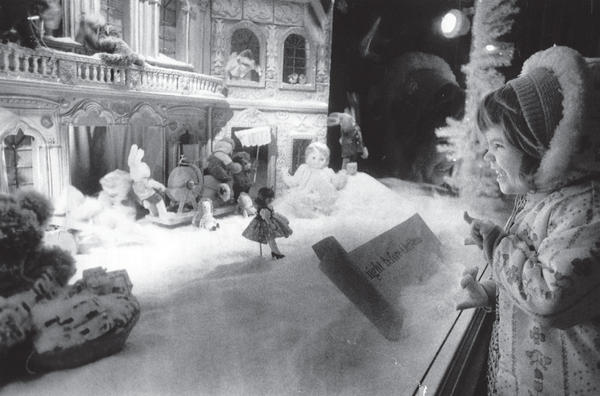
Even a simply decorated window could be a cause for delight with viewers. In this photo, a little girl gleefully looks on the Christmas windows at Hutzler’s department store in 1971.
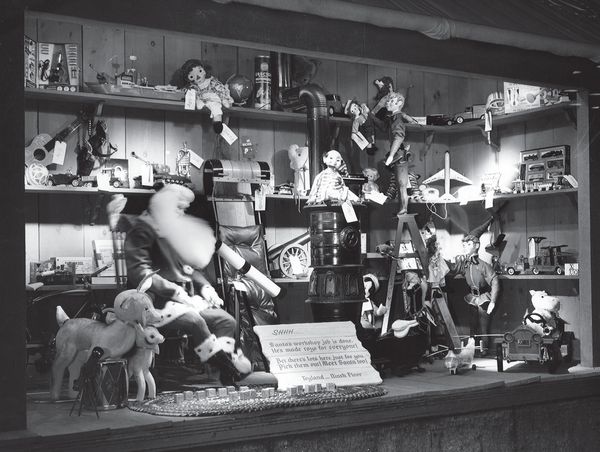
Besides Christmas Nativity scenes, Santa was also a popular favorite for many store windows, typically showcasing his workshop or his Christmas Eve sleigh ride. In this photo of a Kaufmann’s department store window, Santa is surrounded by the toys he’s created for the children and store.
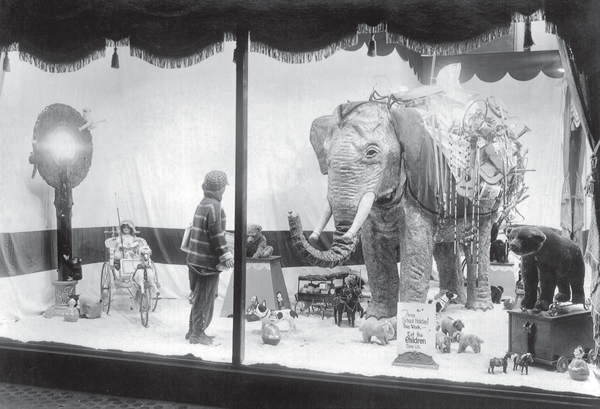
As the world began to become smaller in the wake of the two World Wars, many stores began to feature exotic scenes of distance countries. In this 1940 Christmas display, Dayton’s department store has included an elephant as their display centerpiece.
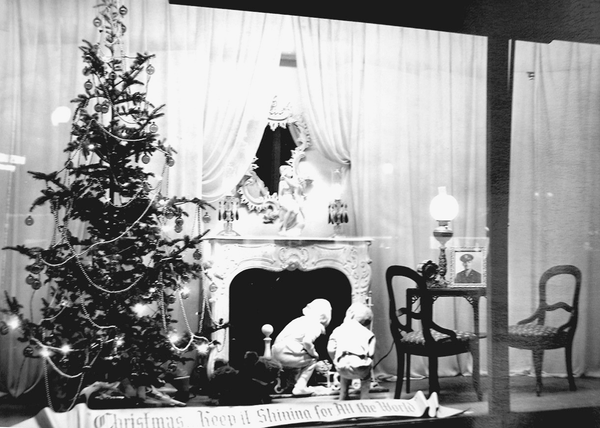
Store windows were also more sparsely decorated during wartime. In this 1940s Christmas window, Rochester’s McCurdy’s has opted to forgo using any icicles in their display. The metal typically used for the icicles was instead put towards the war efforts.
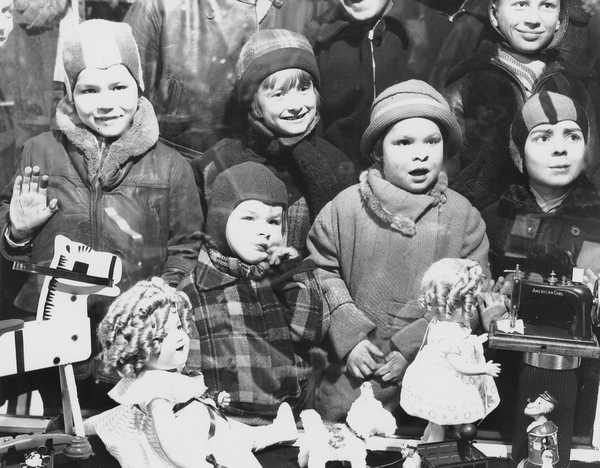
The purpose of most holiday windows was, above all, to sell more of a store’s product. In many cases, stores would simply feature the newest toys they had for sale in their streetside windows, for children to point out to their parents. This 1936 photo shows a group of children looking at the new toys at F.W. Woolworth’s, several of which were drawn from popular culture, such as Shirley Temple, or Popeye the Sailor Man.
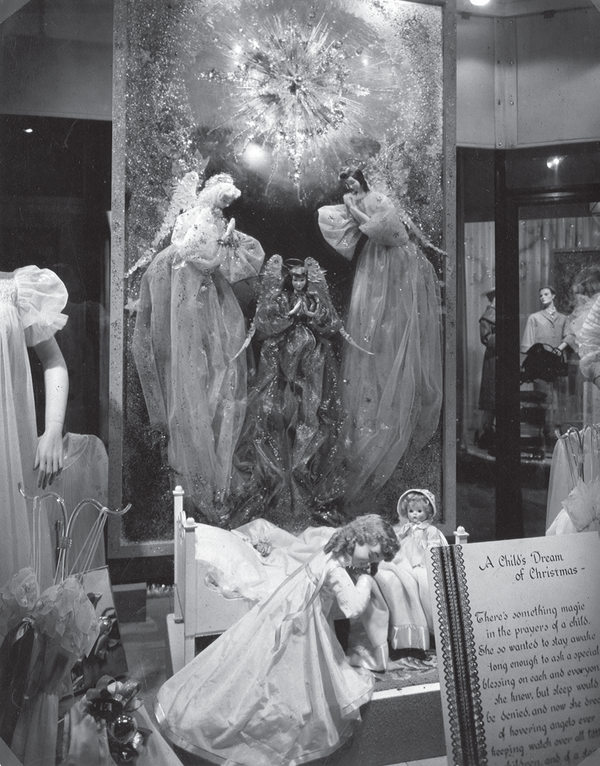
Religious-themed windows were very popular with many companies, especially during the early-to-mid 1900s. This 1950s Christmas window is Neusteters’ shows a “Child’s Dream of Christmas,” complete with heavenly angels.
